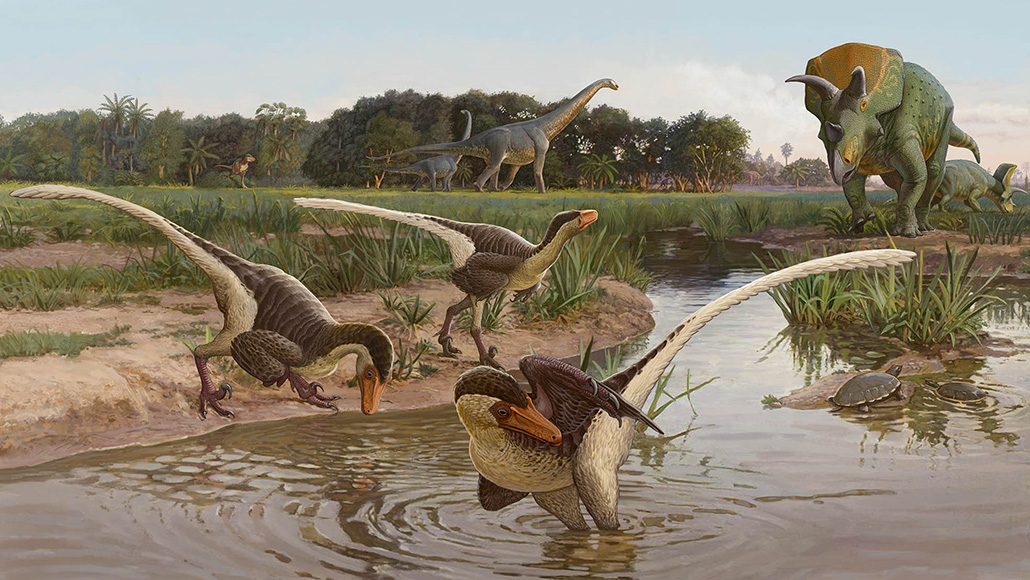Fossils of a new dromaeosaur date to the end of the Age of Dinosaurs
Newly discovered species suggests these fierce predators were diversifying right up to the end

Dineobellator notohesperus (illustrated in foreground) was a fierce, feathered predator that lived about 68 million years ago, alongside horned dinosaurs like Ojoceratops and sauropods like Alamosaurus (background).
Sergey Krasovskiy








